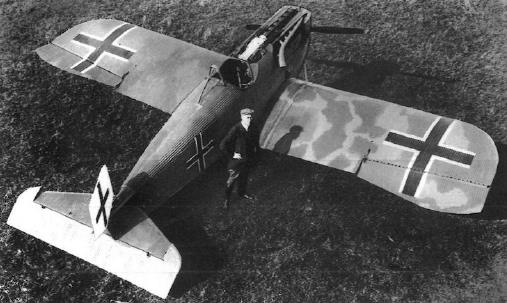The Junkers D.I (factory designation J 9) was a fighter aircraft produced in Germany late in World War I, significant for becoming the first all-metal fighter to enter service. The prototype, a private venture by Junkers designated the J 7, first flew on 17 September 1917,[1] going through nearly a half-dozen detail changes in its design during its tests. Demonstrated to the Idflieg early the following year, it proved impressive enough to result in an order for three additional aircraft for trials. However, the changes made by Junkers were significant enough for the firm to redesignate the next example the J 9, which was supplied to the Idflieg instead of the three J 7s ordered.
During tests, the J 9 was felt to lack the maneuverability necessary for a front-line fighter, but was judged fit for a naval fighter, and a batch of 12 was ordered. These were to have been supplied to a naval unit by September 1918, but instead equipped the same unit redeployed to the Eastern Front after the Armistice. One survives in the Musée de l'Air et de l'Espace, outside Paris, France.
| Type |
Single-seat fighter |
Single seat seaplane |
| Engine |
1 BMW IIIa, Mercedes D III, BMW IIIb |
|
| Dimensions |
Length 7,25 m, height 2,60 m, span 9,00 m, wing area |
|
| Weights |
Empty 654 kg, flying weight 834 kg |
|
| Performance |
Max. speed 225 km/h, endurance 1,5 h, rate of climb 3,5 m7sec. |
|
| Armament |
2 Spandau MG |
None |

